A Western Frontier General
The Indian Wars are what thousands of books have been written about, both nonfiction historical accounts and dime novels. Fighting Indians is also what we remember most about the famous frontier generals of the period but in reality many were involved in civilian matters as well.
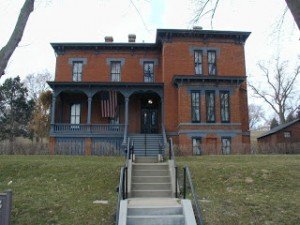
Visit the General George Crook House
The General George Crook House is located in the Miller Park neighborhood of North Omaha Nebraska. It’s on the U.S. Register of Historic Places and it would makes a good trip stop when visiting Omaha. The Crook House was used as the headquarters for the Department of the Platte during the general’s tenure and also for later commanders.
The Crook House was visited by both Ulysses S. Grant and Rutherford B. Hayes. The house was eventually taken over by the Douglas County Historical Society and was refurbished in the 1980’s. It’s open for both tours and special events.
The Expeditions of General George Crook
General George Crook was involved in many events on the western U.S. frontier, being part of the Sioux Indian Wars of the mid 1870’s as well as Comanche campaigns among others.
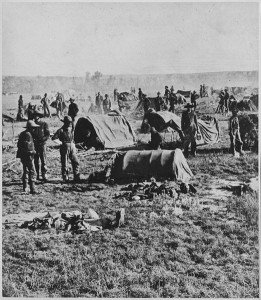
Crook was also involved in matters not strictly military in nature and with nothing to do with fighting Indians or western pioneers. This was a part of frontier military duty that probably hasn’t been heavily written about in history books.
The Posse Comitatus Act
During the very early Civil War reconstruction period, Congress passed the Posse Comitatus Act which really was an extension of an Act passed in 1807.
The Posse Comitatus Act put a limit the military’s potential involvement in civilian affairs. In other words, it’s intent was to keep the army from being a domestic police force. Local and state law enforcement was charged with that duty.
This law was actually one of the founding principles of our government. Being passed in 1867, the act went into effect at about the peak time of westward expansion. Towns were springing up almost every day and when the transcontinental railroad was completed, in 1869 the emigration westward reached even new heights. To be sure, the U.S. Army had it’s hands full trying to protect settlers and keeping trails open. At about this time the army was also attempting to write treaties and relocate Indians to reservations.
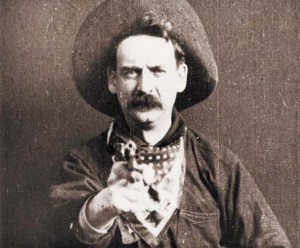
The Army Goes After Train Robbers
One interesting story concerns the army’s role in chasing after train robbers.
A Union Pacific train was robbed at Big Springs Nebraska on September 18, 1877. The robbers netted personal items from the passengers and about $60,000 in gold coins. This certainly was one of the great robberies of the time. After the robbery the outlaws split up into two groups and headed south. The Union Pacific offered a $10,000 reward mostly due to the amount of gold coins stolen which was enormous for the time.
Civilian posse’s headed out after the robbers which was normal. What was different in this case was that General George Crook ordered troops dispatched from both Fort Robinson and Fort McPherson to join the pursuit. Eleven of his troops joined Sheriff George W. Bardsley of Hayes City Kansas and a short time later confronted two of the bandits near Buffalo Station Kansas. A shootout ensued and two of the robbers were killed.
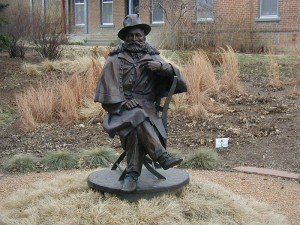
Reward Money
If it sounded like a good outcome, it really wasn’t. There was a legal battle over the reward money and a few years later Bardsley collected $2,250 and the eleven soldiers had to split a total of $1,002. The tale is that Sheriff Bardsley claimed all the credit. While General Crook was known to have a liberal interpretation of Posse Comitatus, in most cases when the army involved itself in civilian affairs it drew loud criticism.
The army’s dilemma was that the relatively new settlements in the west often times had inadequate law enforcement but at the same time the army had to act in some capacity when high profile trouble erupted and a $60,000 train robbery qualified as high profile.
Regardless of the controversy generated, General Crook was known to have ordered his soldiers into civilian matters on several occasions. You can just imagine the political infighting that ensued trying to interpret the Posse Comitatus Act. Today we have much clearer lines of jurisdiction but in the wild west of the late 1800’s with local law enforcement somewhat sketchy this line was blurred at best.
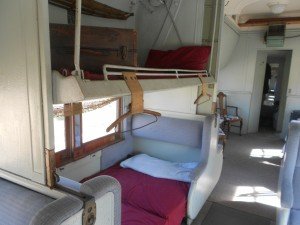
Labor Trouble and the Pullman Strike
Another high profile civilian incident that ended up involving the army was the 1894 Pullman Strike in Chicago. While Chicago isn’t really the western frontier, the story is revealing as to how military intervention can turn political.
The period after the Civil War saw it’s share of labor unrest. Immigrants had arrived by the thousands searching for work. Regarding labor unions, The Knights of Labor reached it’s zenith in the 1880’s and had it’s greatest victory with the Union Pacific Railroad strike.
The primary goal of the Knights was the eight hour workday. Alkso miners as a group called many strikes involving both pay and working conditions. In the second decade of the 20th century one of the most bloodiest labor uprisings took place in Ludlow Colorado when coal miners struck and were attacked by the Colorado Militia. This incident also eventually drew in federal troops to stop the bloodshed.
Several economic downturns from the 1870’s onward aggravated the labor situation and in this case it involved the Pullman strike in Chicago.
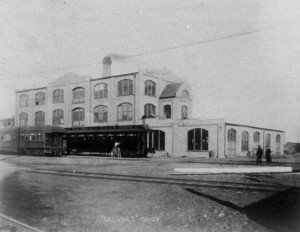
During an economic downturn the Pullman Palace Car Company lowered worker’s pay 25% while leaving corporate manager’s pay the same. Union activists and avowed socialists entered the picture. Tempers flared and violence was inevitable. George Pullman stuck to his guns. He wasn’t going to bargain with his workers and he wasn’t going to even speak with the strikers.
General Nelson Appleton Miles, another big figure from the Indian Wars both on the plains and in Arizona (Geronimo surrendered to Miles) and a Civil War veteran, was sent in with 12,000 troops augmented by U.S. Marshals on orders of President Grover Cleveland to end the strike. Miles had one of the more colorful army careers and eventually in 1895 was elevated to the post of Commanding General of the U.S. Army.
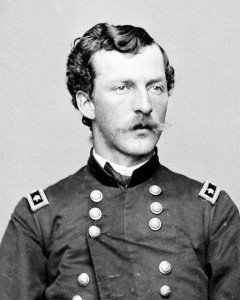
The use of force against civilians by federal troops was a very controversial topic at the time. During the confrontation several strikers were killed in the and that in itself led to further violence. The situation spiraled out of control. A tremendous amount of property damage occurred. During the strike Eugene Debs, the socialist organizer, was arrested and tried for inciting violence and destroying private railroad property. Debs, after two trials and being represented by Clarence Darrow was found guilty of a lesser charge and actually served six months in jail.
See the Trips Into History article on the links below…
The Last Days of the California Stagecoach
Garryowen and George Armstrong Custer
When the Pullman Strike was over the army took a great deal of criticism. The criticism was that Nelson Miles was getting too close with George Pullman and kept his troops in Chicago longer than necessary. In situations like these the army is wide open for accusations of taking sides.
Regardless of this incident, Nelson Miles was considered one of the frontier’s more successful army generals. The town of Miles City Montana was named in the General’s honor. Pullman himself was criticized for his “company town” philosophy whereas workers were dependent on his company for their homes, groceries, everything. They lived in homes within Pullman’s own town outside Chicago.

Many historians have pointed out the irony of having rank and file troops used to subdue the nation’s labor force. If anything, the typical non commissioned soldier had much more in common with the labor unions of the late 1800’s made up mostly of newly arrived immigrants than he did with the industrial tycoons of that period. Many U.S. Army troops were themselves immigrants.
As a memorial to the 1894 Pullman strikers, a rose and herb garden was planted in Chicago in the 1980’s to commemorate the strike. It’s location is 11111 S. Forestville Ave.
Recommended books on the subject of the western frontier generals and 1800’s labor unrest include General Crook and the Western Frontier by author Charles M. Robinson III…My Life on the Plains: Or, Personal Experiences with Indians by George Armstrong Custer…The Pullman Strike : The Story of a Unique Experiment and of a Great Labor Upheaval by Almont Lindsey.
(Article copyright Trips Into History. Photos and images in the public domain)
